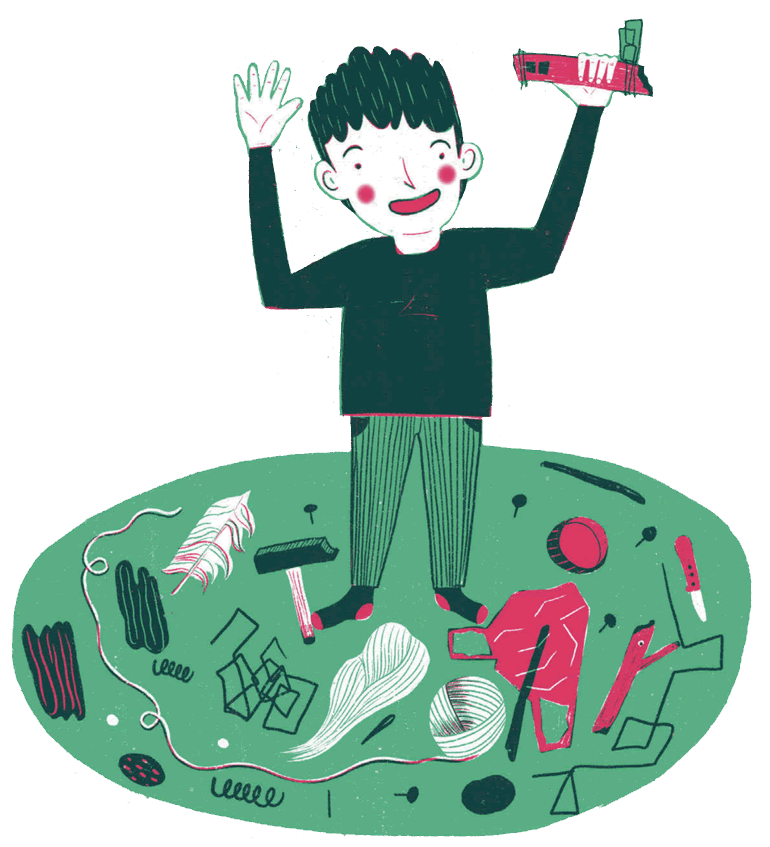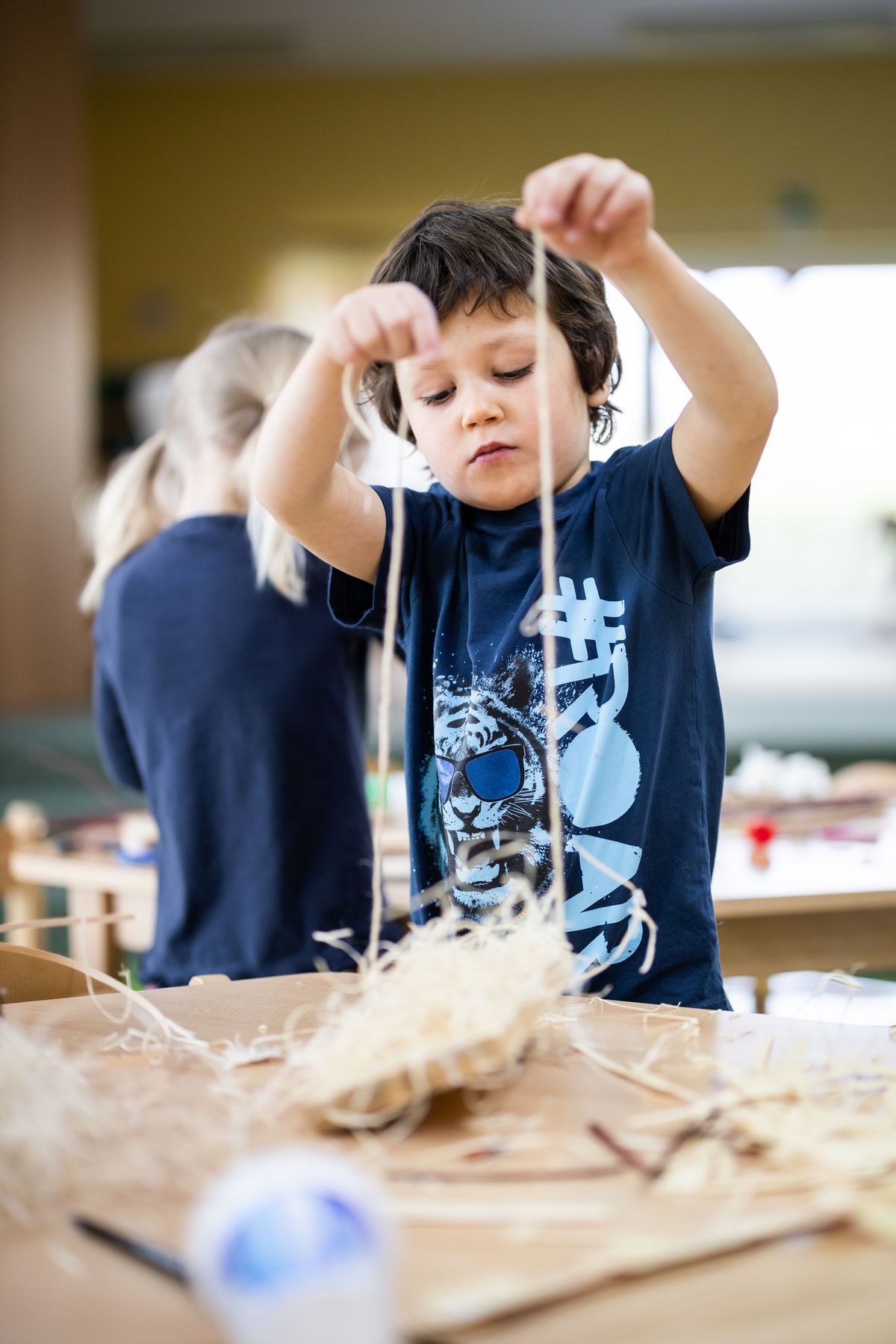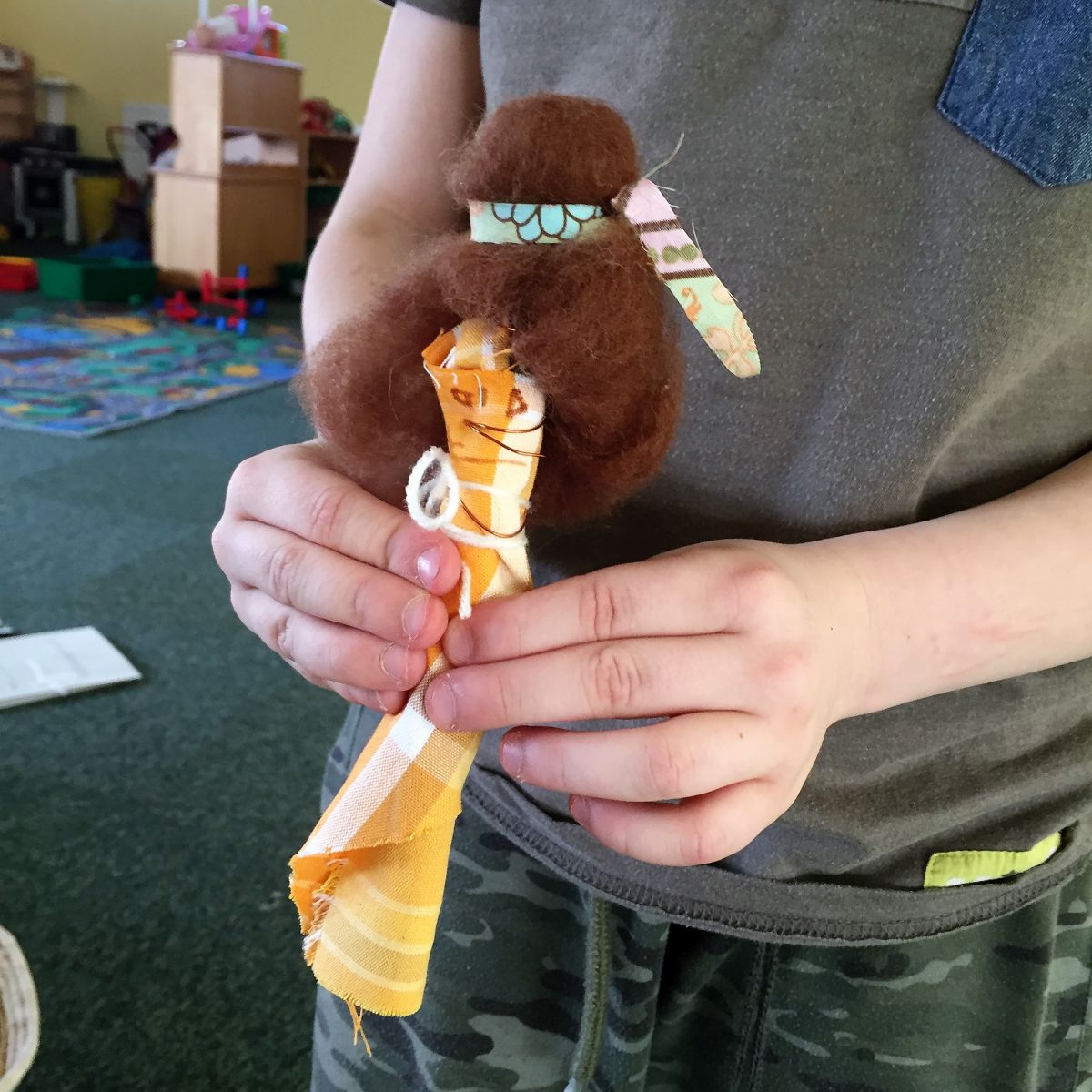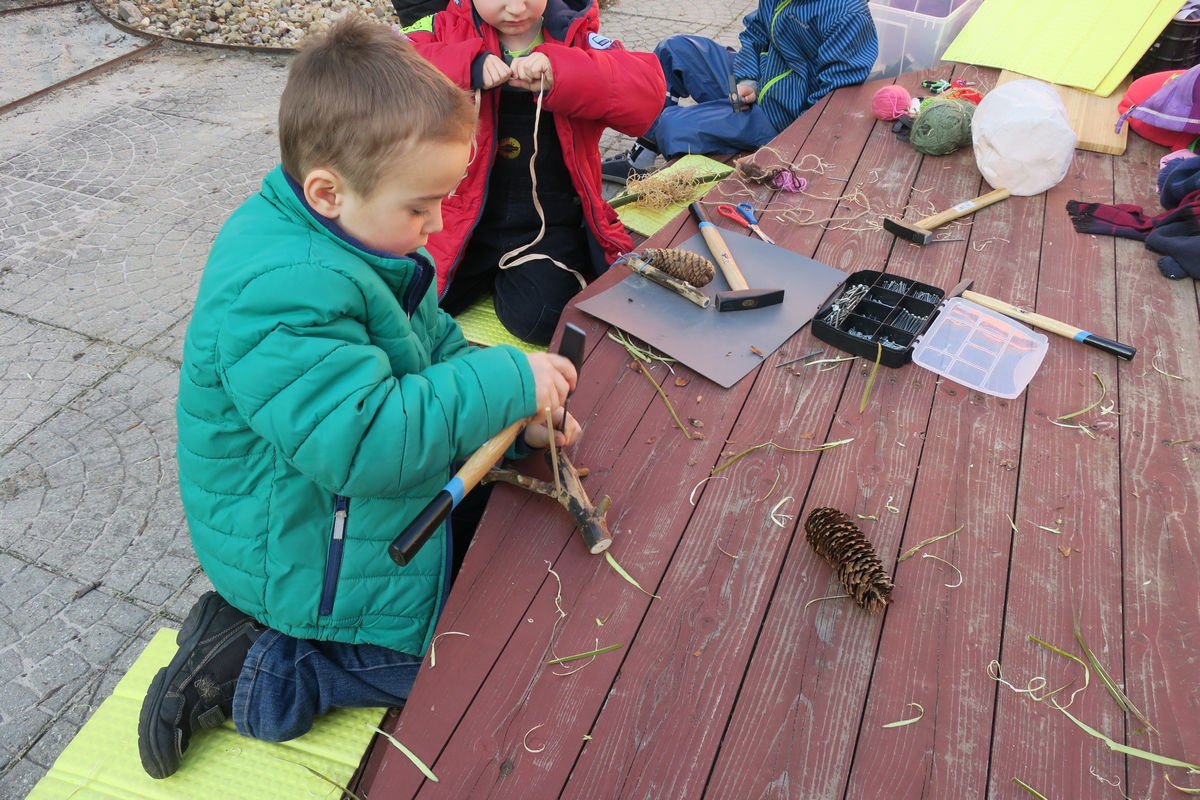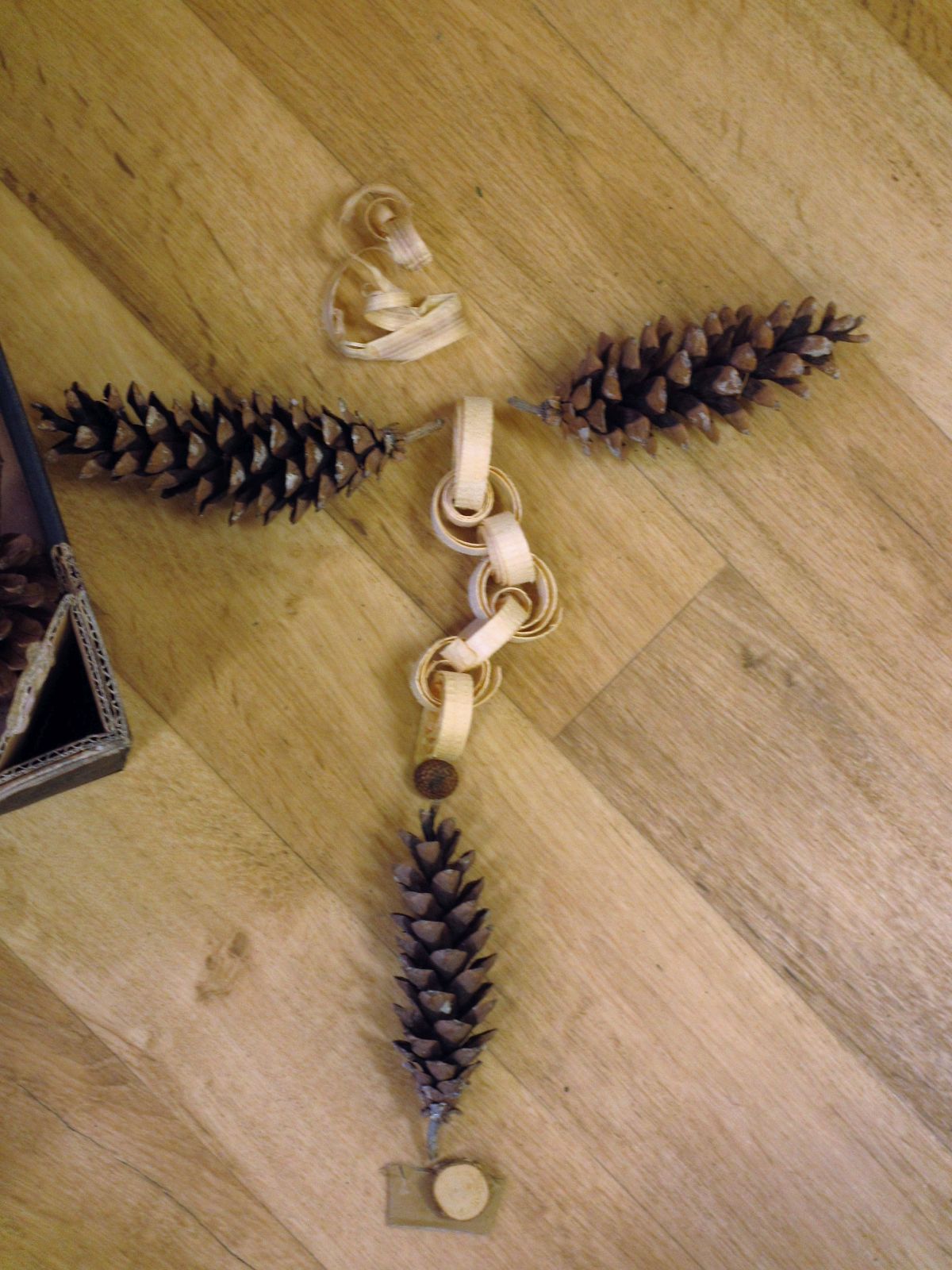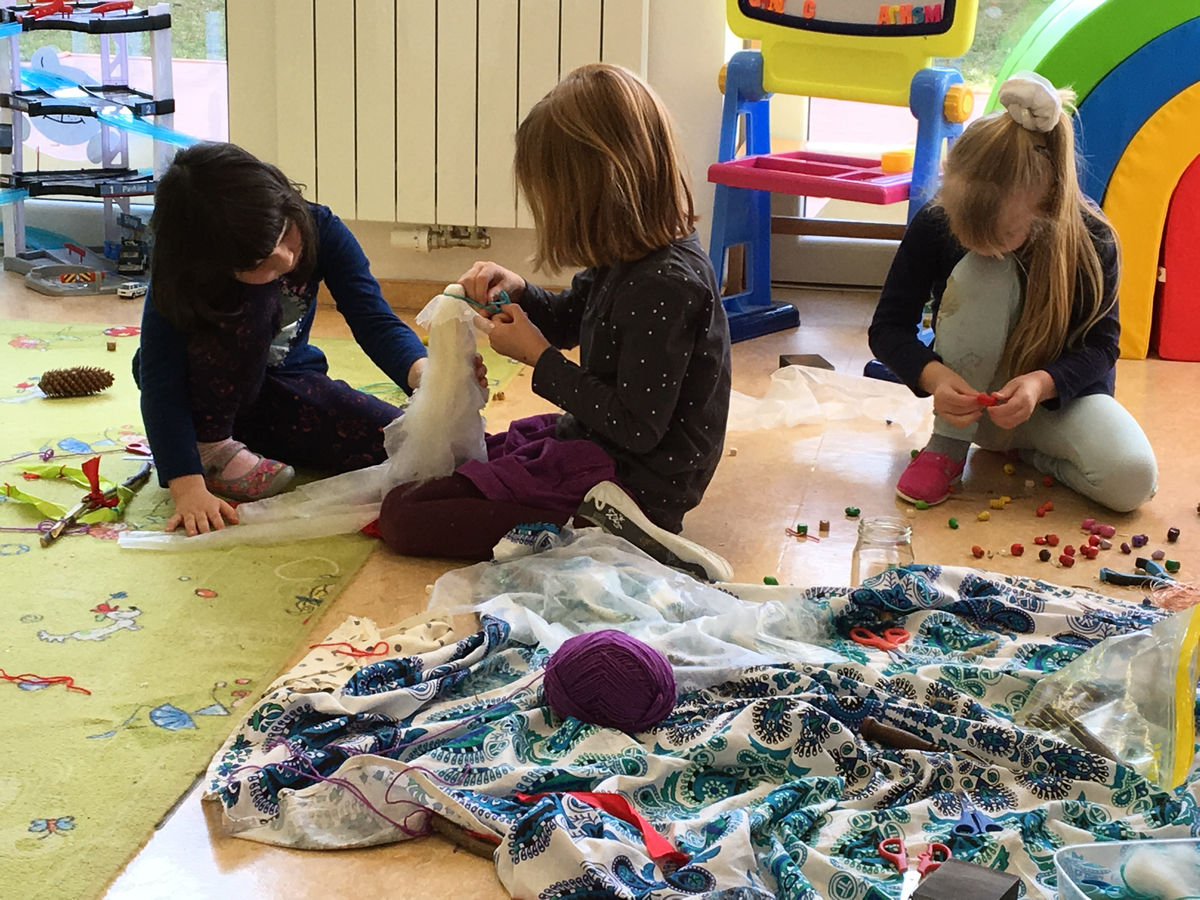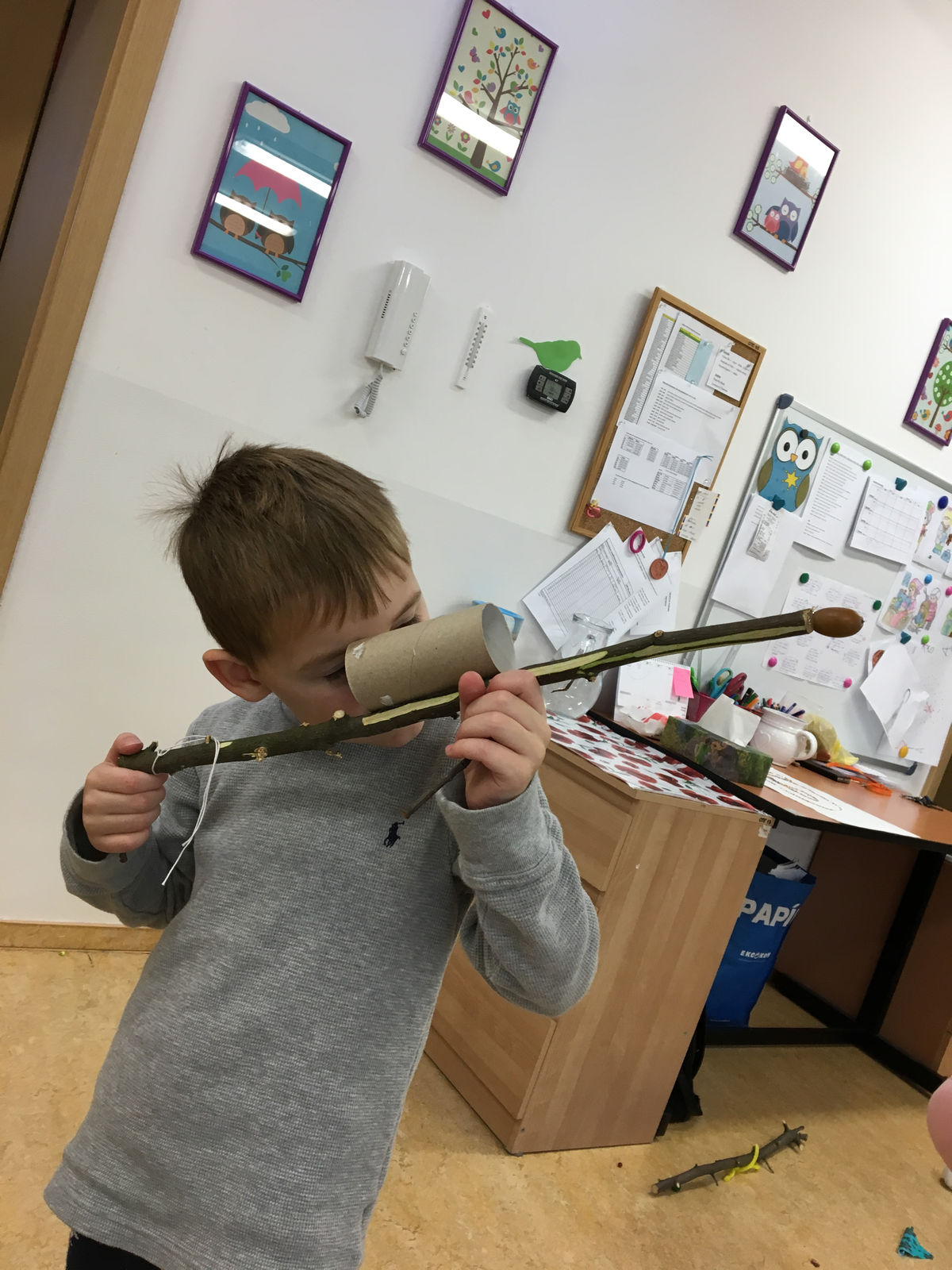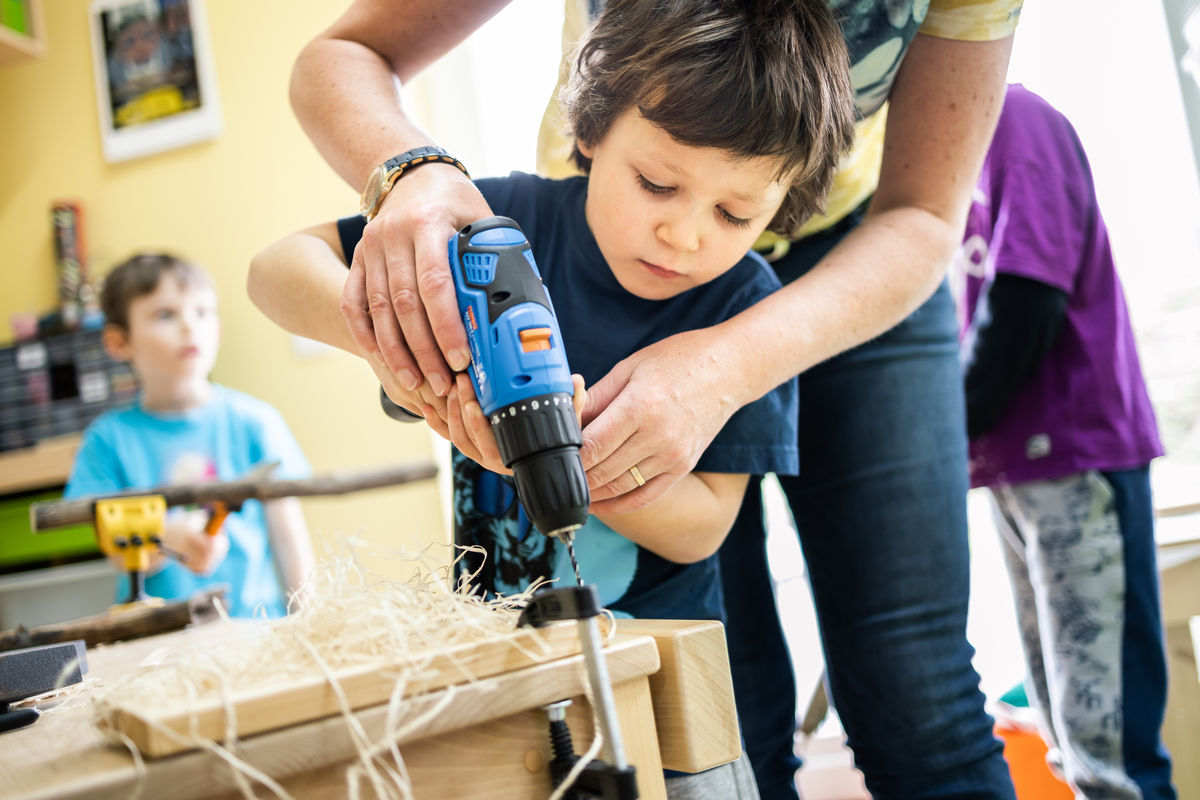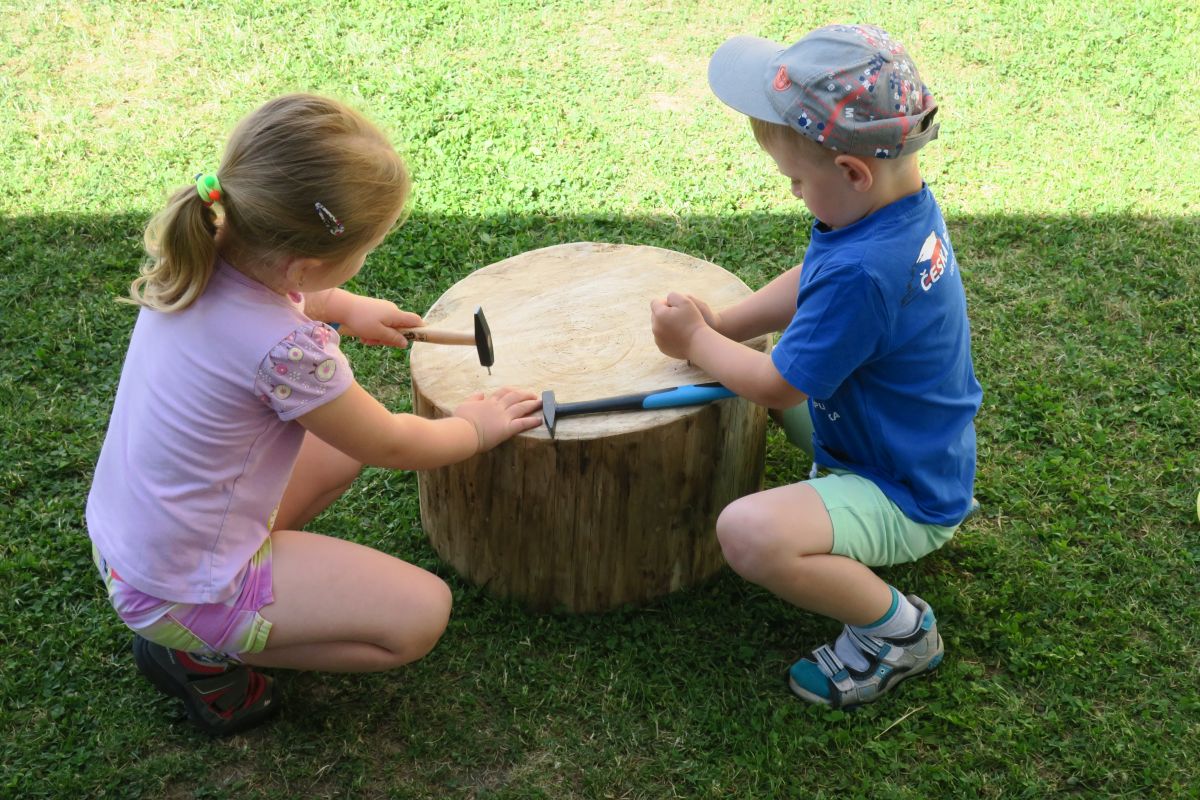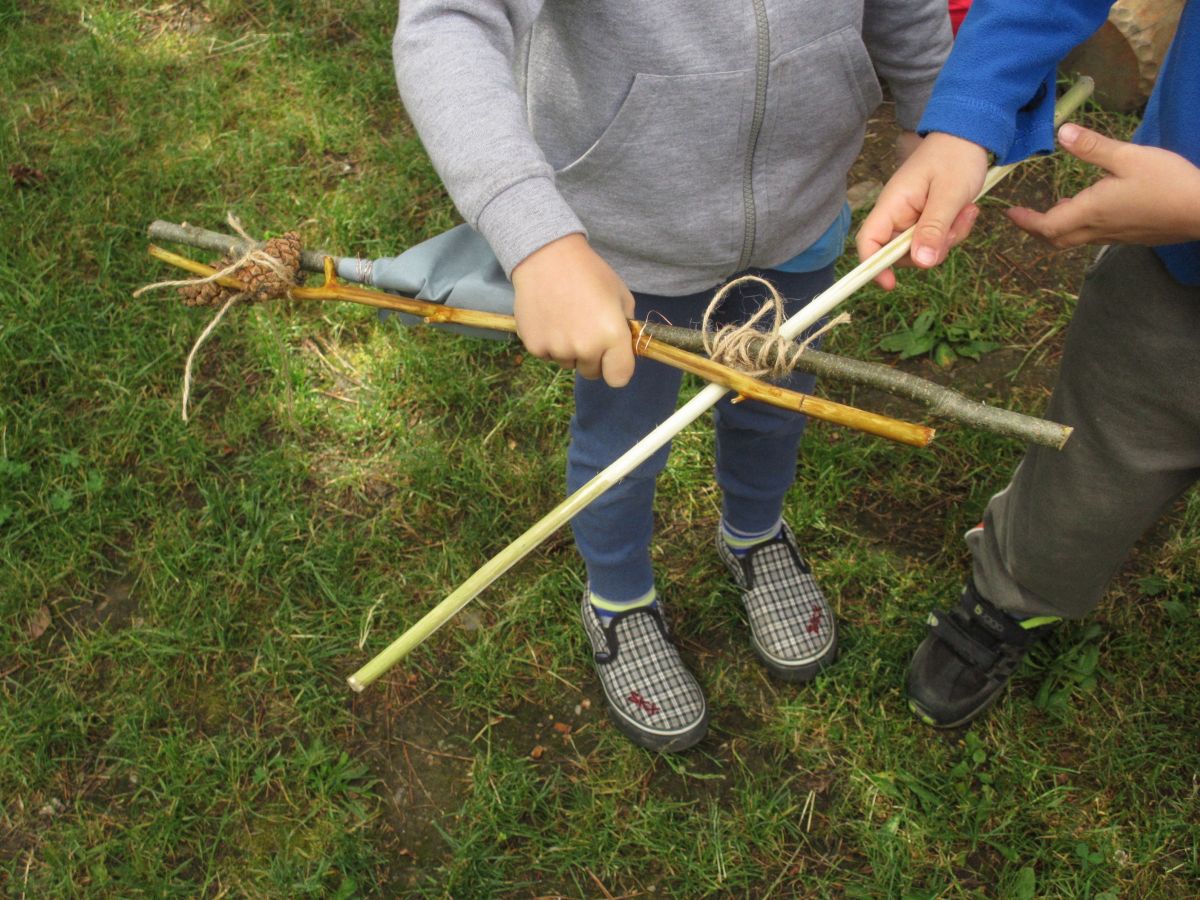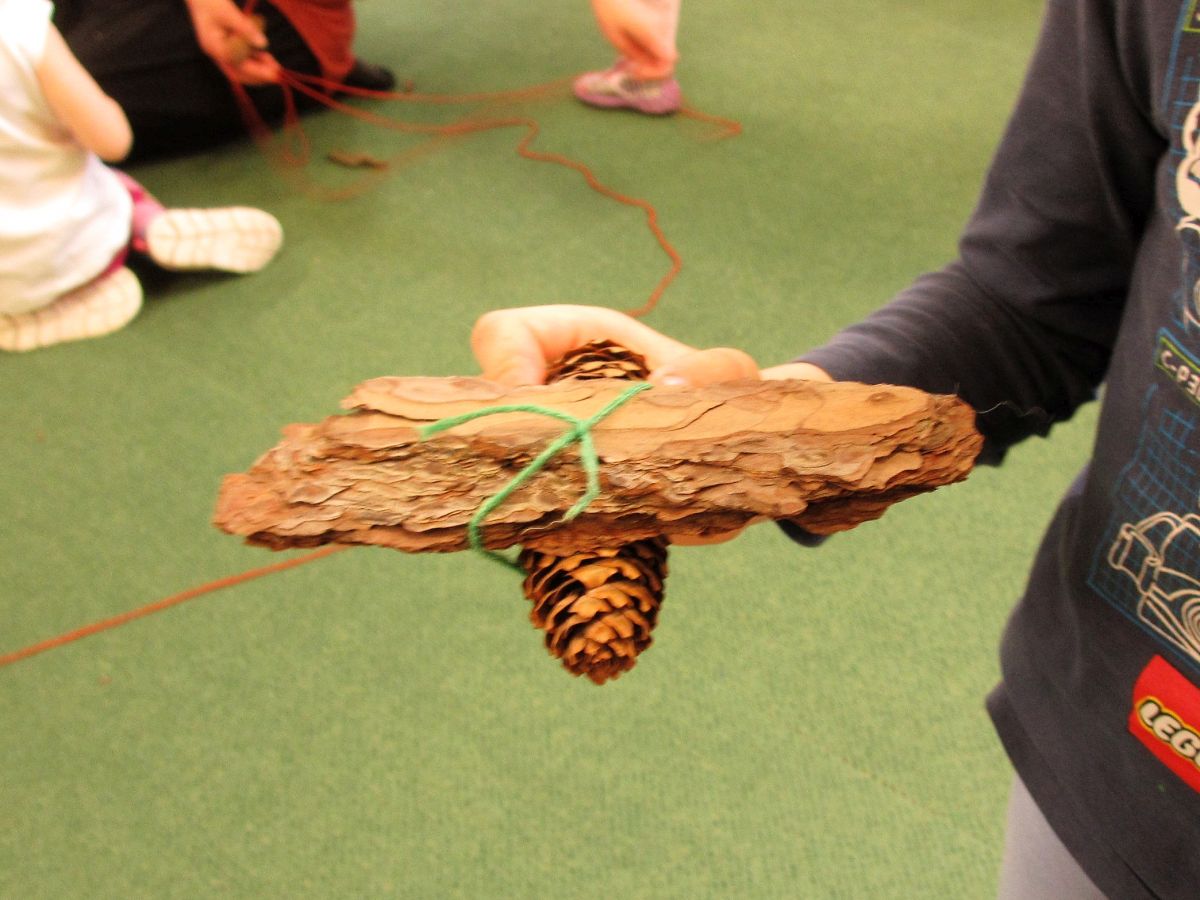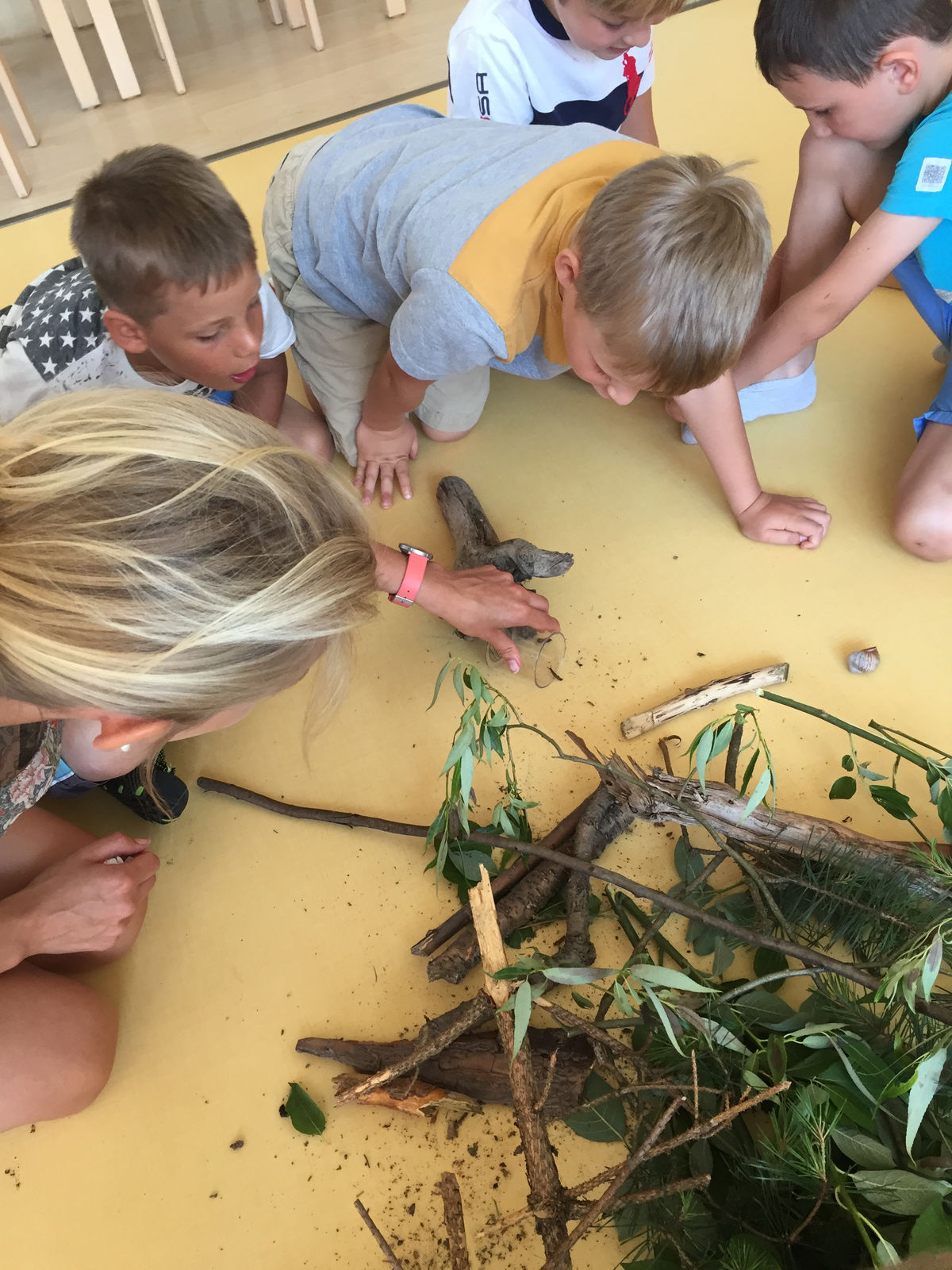
Children can play with materials and products during and after the activity; they can freely transform and modify them. They can take them outside with them or perhaps place them in a house they build out of ordinary building blocks. The finished product doesn’t end up on a bulletin board.
This means that making decisions about what to create, what to use, how to solve arising problems, and what happens to the finished product is up to the child, not the teacher. In creative play, the adult is more of a guide who prepares the appropriate environment, teaches the children how to follow safety rules and reflects on their work with them.
Children do not have to produce a product during the activity. The objectives of the activities are related to the development of the child’s skills and competences, not the results of their work. Simply put: what a child learns is not always visible. We develop learning competence in a child who, for example, grabs a pair of scissors and “only” cuts conifer needles during the activity, or a child who makes a doll out of wood sticks.

